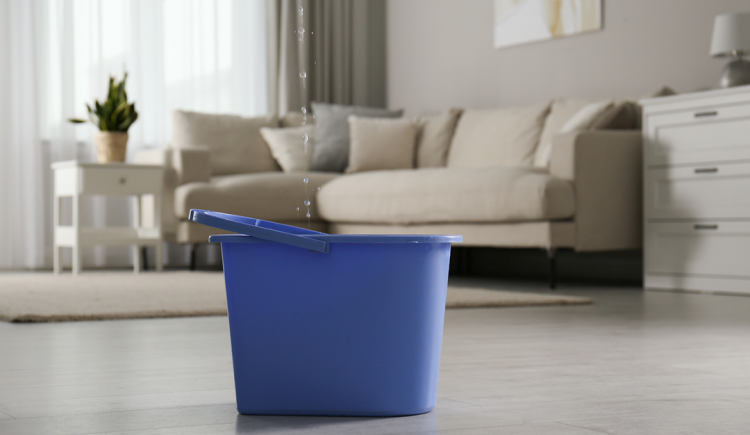Roof leaks are one of the leading causes of preventable property damage. A leaking roof is disruptive and costly, and can eventually cause mold, damage to interior finishes and even structural damage.
While it’s true that older roofs or those in disrepair are at greater risk for leaks, one of the most common causes of roof failure is faulty workmanship during installation. This is not always readily apparent because it often takes a few years for a poor installation to manifest itself as a leak. Using a licensed, qualified roofing contractor for any installations or repairs is always recommended.
Let’s look at some of the factors that affect how a roof handles water and what can cause leaks to form.
Pitched/Sloped Roofs: Pitched or sloped roofs are designed to shed water from one shingle to the next down to the roof edge, where the gutters and downspouts will carry the water away. Many people are surprised to learn that sloped roofs are not actually waterproof but instead rely on gravity and engineering to quickly move water off the home.
Flat Roofs: The most common type of flat roof is the built-up, or tar-and-gravel, roof. Flat roofs are designed to be waterproof and use a membrane such as roofing felt or specially engineered foam to seal the surface. These roofs have just enough slope to conduct water to a drain, which funnels water down and off the roof surface. It’s critical to keep drains on flat roof clear of debris so water won’t back up and damage the integrity of the roof.
What Causes Leaks? Most roof leaks can be traced to poorly installed or worn flashing. Flashing usually consists of pieces of metal that cover gaps between the roofing material and items that penetrate through the roof such as chimneys, skylights, dormers and roof/wall intersections. Wind and rain in just the wrong combination can cause a pitched roof to leak by compromising its water-shedding capabilities.
In cold climates, ice damming can cause a perfectly good roof surface to leak. Ice can block the flow of water to the edge of the roof or to the drain. The water can then back up under the shingles and leak into the house.
Leaks can have interior causes as well. Condensation in the attic due to leaking household air or heating and/or air conditioning ducts can cause damage to the roof decking and structural framing. In severe cases, it can cause water to drip back into the house. This can lead to mold and even structural damage if not corrected.
Proper installation and maintenance of roofs are key to preventing problems down the road. Homeowners should monitor their roof and attic, and contact a qualified roofing contractor at the first sign of any problems.
For more information, please visit pillartopost.com.












